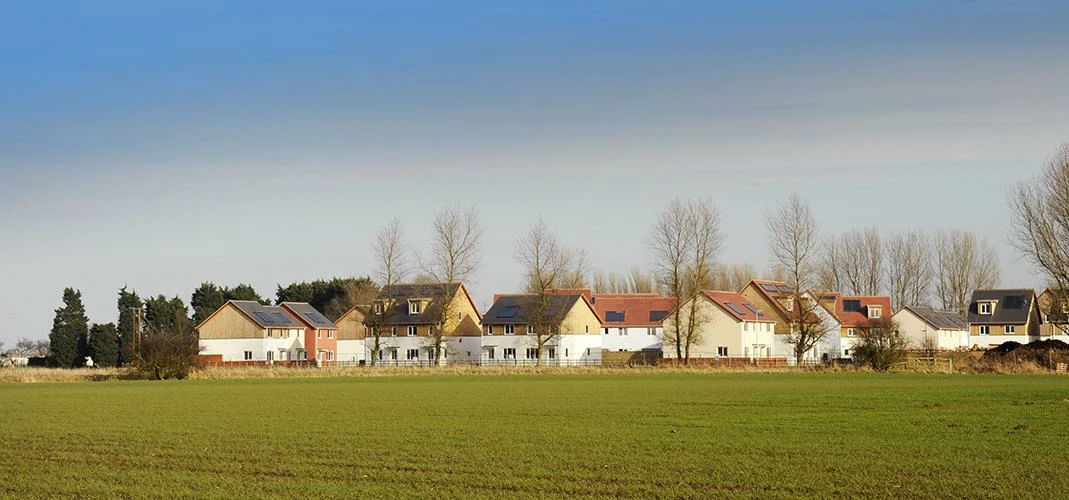
Partner Article
Will using green belt address the housing shortage?
By Stephen Palmer, Managing Director, Place Architecture.
The Government’s declarations about the need for more house building are widely accepted and welcomed by those of us with a professional interest. Recent changes to policy will certainly help, however there is one factor that has so far been ignored - the lack of available and affordable land.
This is the most common challenge that undermines efforts to build, particularly in rural areas. So will releasing greenbelt land actually make a difference? According to a recent report by think-tank Policy Network, it probably won’t. The report says that releasing green belt allows property funds to “acquire options on the ugly bits of green belt land that would most likely gain planning permission first”. They would then “release the land only slowly to keep land prices rising in order to generate significant investment returns for their clients.” Land banking is a common practice yet one which is ignored by the government. Against this backdrop, it is hard to see how the government’s criticisms of the house building industry can effectively be addressed without a significant change to current practices. The government’s criticism of house builders, particularly housing associations, does not take account of these factors and how smaller developers and particularly some in the social housing sector are often squeezed out by large property fund managers and the like.
In July this year, the government announced changes to housing policy and planning reforms which it viewed were the key barriers to more development. According to a report by the Insititute For Governmentthese were:
- planning confined to the local level
- funding of local public services and infrastructure poorly responsive to housing development
- a mindset of ‘development control’ – the requirement that any change in land use be subject to individual planning permission.
Whilst these are indeed barriers, without changes that will release more actual land to build on, it is unlikely that the level of construction needed can realistically be achieved.
We increasingly look to Europe for inspiration as to how to solve issues like this and it is no surprise that the Netherlands and Germany are tackling the problem head on. According to Planning Resource, in both countries the value of residential land is frozen at 20 times that of agricultural - here in the UK it is currently up to 200 times.
Adopting this approach in the UK would represent the biggest step in genuinely addressing the means by which more development can take place. Intervention is required, not only to make more land available, but to control the way property funds use land prices as a source of profit.
What do you think about Government policies on housing development? Get in touch or tweet us @Placearch.
Place Architecture is a multi-disciplinary practice with 30 years experience in health, education, sports and leisure in the public and private sector throughout The Midlands, The North-East and North Yorkshire. Our collaborative approach and commitment to best practice is at the heart of what we do and we are trusted by over 100 clients to deliver excellence and best practice.
We specialise in Building Information Modelling, sustainable development and conservation architecture with leading edge capabilities that achieve the best solution.
This was posted in Bdaily's Members' News section by Stephen Palmer .
Enjoy the read? Get Bdaily delivered.
Sign up to receive our popular morning National email for free.








 Powering a new wave of regional screen indies
Powering a new wave of regional screen indies
 A new year and a new outlook for property scene
A new year and a new outlook for property scene
 Zero per cent - but maximum brand exposure
Zero per cent - but maximum brand exposure
 We don’t talk about money stress enough
We don’t talk about money stress enough
 A year of resilience, growth and collaboration
A year of resilience, growth and collaboration
 Apprenticeships: Lower standards risk safety
Apprenticeships: Lower standards risk safety
 Keeping it reel: Creating video in an authenticity era
Keeping it reel: Creating video in an authenticity era
 Budget: Creating a more vibrant market economy
Budget: Creating a more vibrant market economy
 Celebrating excellence and community support
Celebrating excellence and community support
 The value of nurturing homegrown innovation
The value of nurturing homegrown innovation
 A dynamic, fair and innovative economy
A dynamic, fair and innovative economy
 Navigating the property investment market
Navigating the property investment market